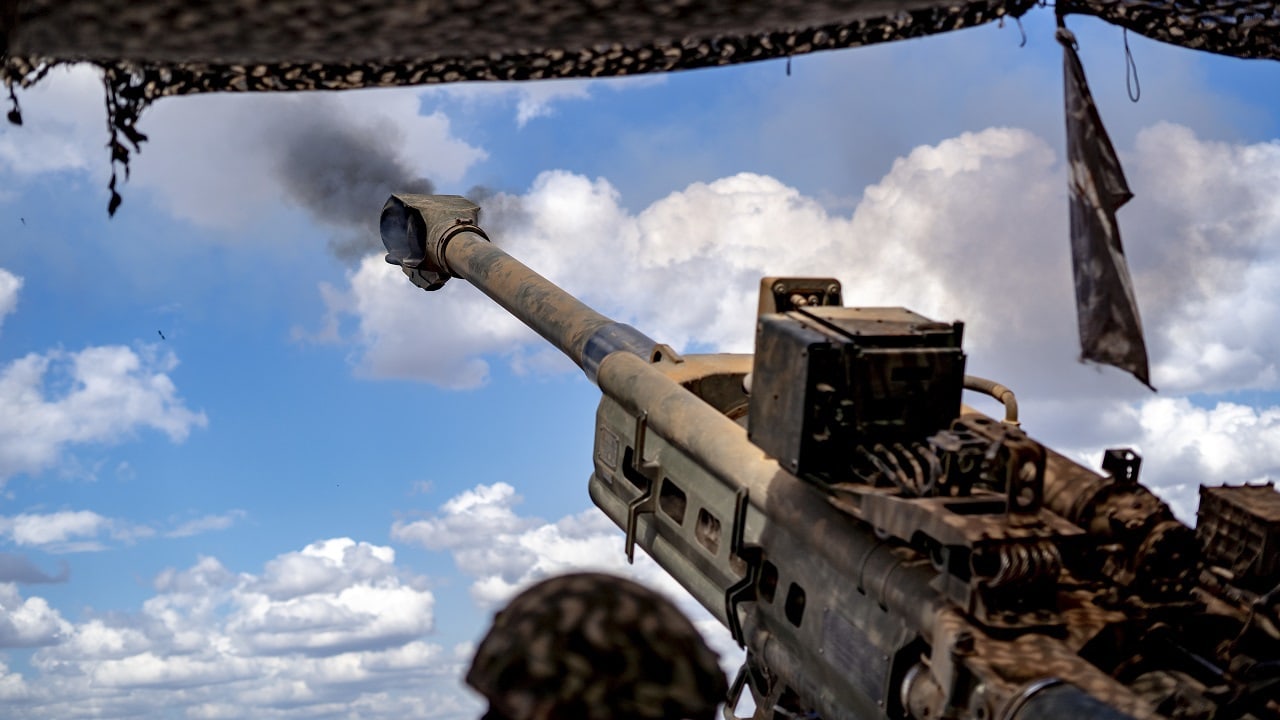On Monday, Secretary of Defense Lloyd Austin said one U.S. objective in its support of Ukraine was to “weaken” Russia. Former NATO commander Gen (ret). Wesley Clark recently told CNN that one way to accomplish that goal is to send Ukraine “500 tanks, a couple thousand tubes of artillery and rockets.” And, he added, “we’ve got to get (all those tanks and artillery tubes) moving if we’re going to break” Russia’s offensive in the Donbas.
While it may seem self-evident that Ukraine could defeat Russia’s attack if the West provided large numbers of tanks to the front quickly enough, the difficulties and challenges of combat realities make such an outcome highly unlikely. In a best-case scenario for Ukraine, it would take the better part of a year to be able to produce an armored combat capacity strong enough to expel the Russian army from Ukrainian territory – and as explained below, even with such weapons, Ukraine may still not succeed.
Current Tactical Situation in Russo-Ukraine War
First, let’s consider the existing military situation in the east of Ukraine today.
The biggest fight raging at the moment is the Battle of Donbas, in which up to 50,000 Ukrainian troops are defending against reportedly a Russian attack of more than 70,000 troops. Putin’s army is trying to hold the center of a 300-mile front with one portion of its force, attempting penetration of the northern shoulder of Ukraine’s defenses with armored troops that repositioned from Kyiv, and pushing on the southern shoulder with troops recently redeployed from Mariupol.
Russia is waging two efforts to support this main fight, by conducting limited offensives against Kharkiv in the north and in the Kherson region in the south of Ukraine. The intent of these two actions appears to be designed to hold significant Ukrainian Armed Forces (UAF) in place to prevent them from attacking the flanks of Russian troops attacking the Donbas front. Meanwhile, other contingents of UAF troops are defending the coast near Odesa and near Kyiv to guard against any future incursions from Crimea or Belarus.
Though the Ukrainian government has placed a strict embargo on its combat losses, in all probability they have suffered similar levels as that of the Russians, which are reported to be upwards of 40,000 dead and wounded. Other than the possibility of holding back some strategic reserve force, in all likelihood Ukraine has its entire armed force decisively engaged throughout the country.
Second, in order to generate an armored, mobile striking force of sufficient strength to dislodge Russian troops from their current positions, Kyiv would need to take a number of critical steps. At the top of the list, of course, is to procure sufficient numbers of armored vehicles: tanks, artillery pieces, rocket launchers, air defense systems, ammunition and fuel carriers, and other related kit.
To be effective, these weapons must be something close to interoperable, have similar maintenance requirements, and be easy enough to operate that they require minimal training time. Ideally, that would mean getting all types of combat systems that Ukraine has already been using for decades.
While it may sound good to add some modern U.S. howitzers, German tanks, and British anti-air systems, for example, trying to graft those platforms into a system designed to supply and maintain a Soviet-era force would be building in challenges and roadblocks, if for no other reason than each would require its own separate trained mechanics to maintain and repair, and separate types of ammunition from all their other systems; no logistics system could adequately accommodate such disparity.
Third, and most significant: Once the challenges of getting equipment that can be operated and maintained by UAF troops, Ukraine would need to generate a new, trained crop of soldiers almost from scratch. As noted above, the entirety of the Ukrainian army is currently decisively engaged in fierce combat throughout the country. Kyiv doesn’t have the manpower to pull those trained troops off the line and send them somewhere to be trained. New forces would have to be generated, out of contact, while the existing troops try to hold the line against Russia’s attacks. That is a far more daunting task than it seems. Here’s why.
Challenges of Training Ukraine Troops to Use New Heavy Weapons from the West
As in any military task, it is necessary to start with the desired end-state in mind. To have a fighting chance of eventually expelling Russian troops from its territory, Ukraine will need meaningful numbers of effective mechanized brigades. Each mechanized brigade would consist of some mix of tank, infantry, artillery, and air defense companies (plus maintenance and logistic units, of course). To produce a system of such combat units that can fight effectively, however, the process starts at the individual trooper level.
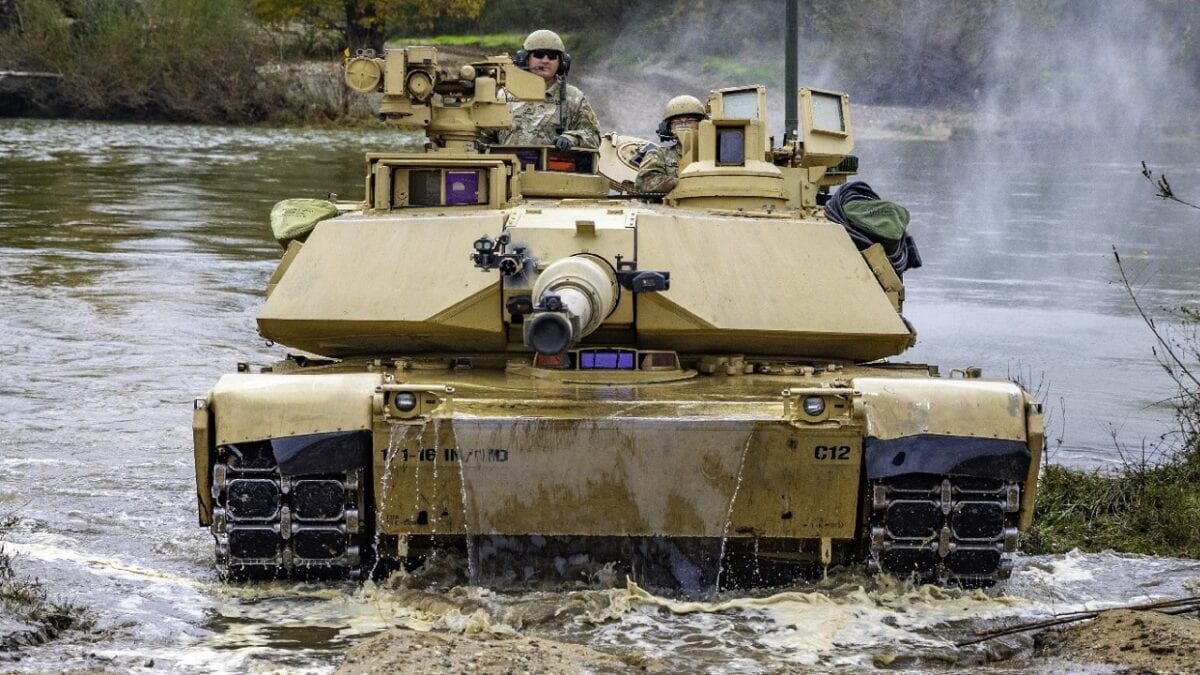
M1 Abrams Tank. Image Credit: Creative Commons.
First, let’s take the tank. Soviet-style T-64 and T-72 tanks, which the UAF has used for decades, are operated by a three-manned crew: the driver, the gunner, and the tank commander. Each of these individuals first hast to learn how to do their job and do it well. The Gunner has to know how to operate the various fire control systems, sights, and techniques for engaging targets. The driver must be proficient at handling the massive vehicle, understand where the tank can and can’t maneuver, how to control the vehicle, and be responsive to the orders of the tank commander.
For his part, the tank commander must know the capabilities and limitations of the tank as well as the driver, must know how to perform the duties of the gunner, and then understand how to “fight the tank” under every environmental circumstance in which the tank may be required to operate.
Once those individual positions have been mastered, then the tank has to learn to fight as a team, which is crucial for the tank’s performance. The next step in forming an armored unit is to build the platoon, which is the tactical unit that faces the enemy. It is typically composed of three to four tanks, led by a lieutenant serving as a platoon leader.
Next, the tank platoon has to learn how to fight as part of a tank company, which is composed of three to four tank platoons. The tank company is usually commanded by a captain. The company commander, joined by his senior enlisted non-commissioned officer and other sergeants, has to fight the platoons as a coordinated team, ensuring that each platoon does its job, but also must know the different tasks he must assign to other platoons so that all work in unison to accomplish a single objective.
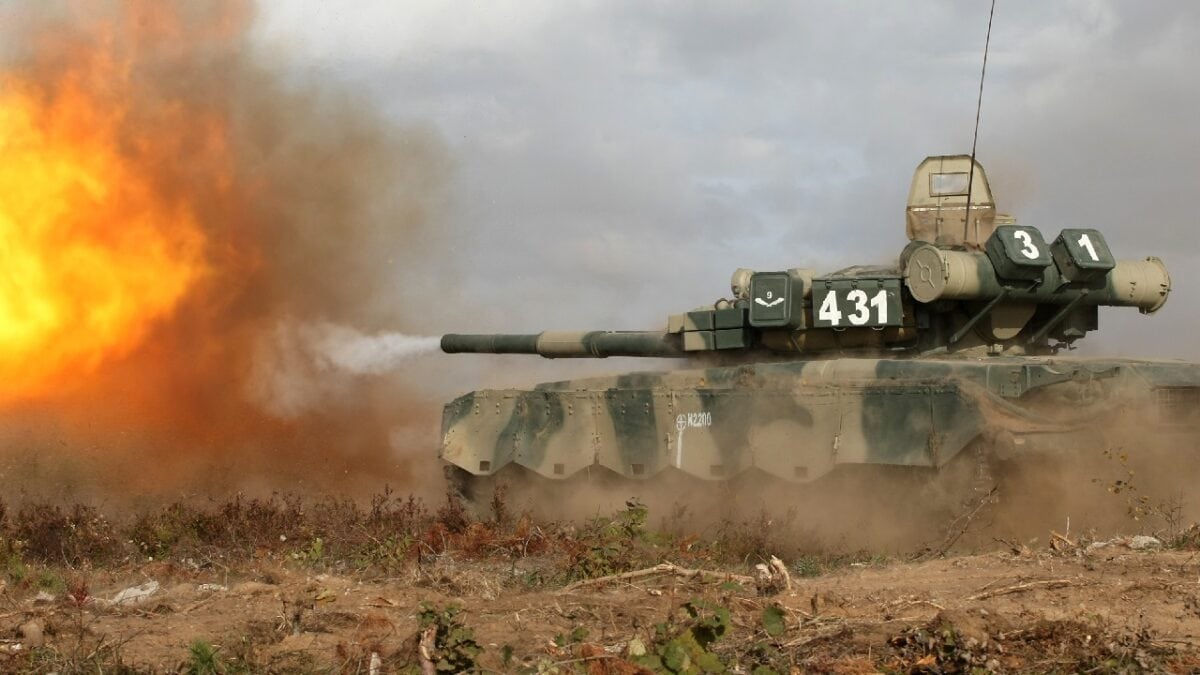
T-80 Tank firing. Image Credit: Creative Commons.
After that, the tank company has to learn how to fight together within the battalion, usually commanded by a Lt. Col. The battalion commander and his staff must know how to fight each of the companies to achieve their mission, and also understand their role in the larger mission, which could be anything from the main effort, a supporting effort, flank support, or as a tactical reserve. The same is then true one level higher with battalions working within a brigade.
Each of these echelons, from platoon to brigade, must be mastered if the battle force is to be successful in combat. As I personally observed in the 1990s as a part of the 2nd Armored Cavalry Regiment (2nd ACR) which was based in Germany, training a brigade-level unit in peacetime is very time-consuming.
When Saddam Hussein invaded Kuwait in August 1990, President George H.W. Bush ordered the 2nd ACR to deploy to the Middle East, along with hundreds of thousands of other U.S. units. We had to retrain ourselves from European terrain and scenarios to desert and Iraqi scenarios as rapidly as possible.
We spent six full months firing weapons and training with the equipment and the crews who would fight the war before Operation Desert Storm began on the ground in late February 1991. We executed the final maneuver training in the Saudi deserts, at platoon, company, battalion, and finally regimental (brigade) level.
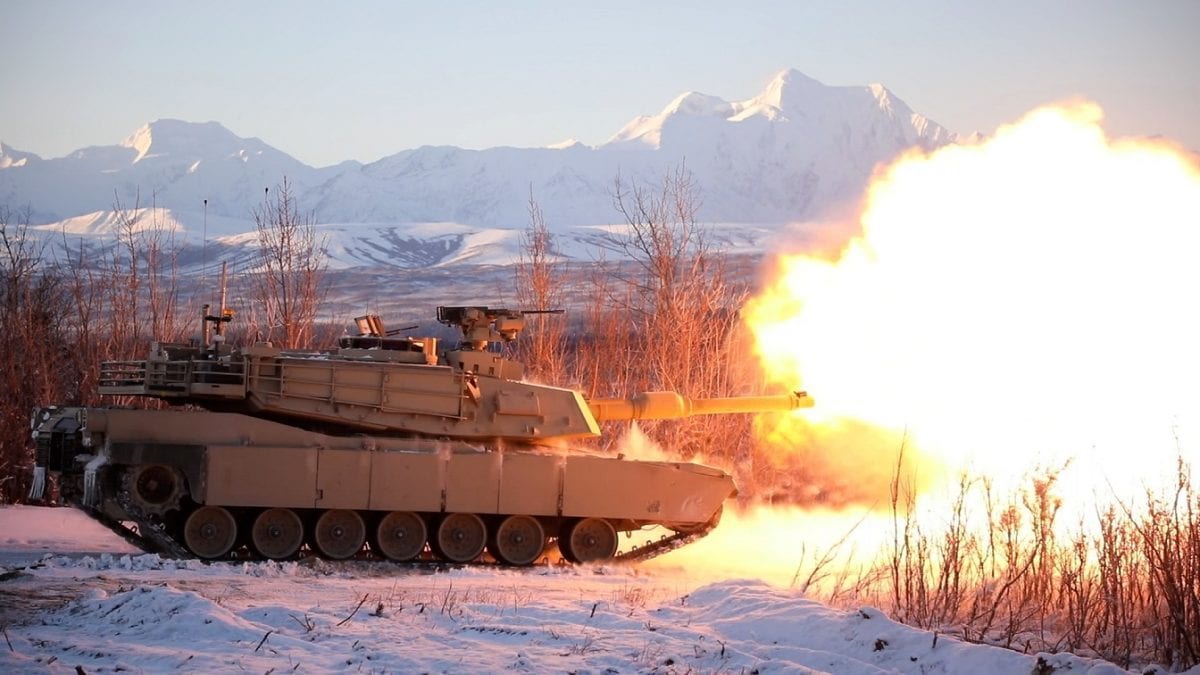
Since testing at U.S. Army Cold Regions Test Center, the Department of Defense’s lone extreme cold natural environment testing facility, began in January 2020, the M1A2 System Enhancement Package version 3 main battle tank was driven more than 2,000 miles in rugged conditions across three seasons of sub-Arctic weather, fired hundreds of rounds for accuracy in extreme cold, and underwent testing of its auxiliary power unit.
Though the platform was extensively tested at U.S. Army Yuma Test Center prior to being put through its paces in Alaska, the sub-zero temperatures brought forth glitches that would have been unimaginable in the desert.
All of that was done out of enemy contact, using the equipment we had trained on for years, that was fully maintained, and led by officers and sergeants with decades of combined experience. Even then, I personally observed that not every American unit performed well. Some were nothing short of brilliant in combat, while others were tentative, and still others outright weak. For Ukraine to form an effective fighting force, they will have none of the advantages we had.
The Cold Calculations of Combat Realities
To build its army, Ukraine would have to train new troops not currently engaged in combat. It would be difficult, but definitely doable, to train new recruits at crew-level tasks of operating tanks, artillery, and other combat gear in an accelerated timeframe. Beyond that, however, there comes an increasing cost in cutting corners and timelines.
For example, in the American army, a company commander typically has five to six years’ worth of experience at the platoon level before taking the reins of a tank company. A battalion commander must have at least 16 years of experience, and a brigade commander, 22 years. The Ukrainian Army virtually didn’t exist eight years ago, so no officer will have much more experience than a company commander in the US, but even that understates the challenge.
For the majority of the eight years since 2014, the vast majority of UAF training and operations have been in static, World War I-style trench warfare; few officers or men have experience commanding tank or infantry units in mobile operations. Though officers can be taught many things, experience can’t be conveyed; it has to be earned over a period of years. Consider the ramifications of the monumental task facing Kyiv today.
Zelensky’s government must figure out how to train multiple mechanized brigades while virtually the whole of his army is actively defending his country. That means that Kyiv will either have to curtail every aspect of training and try to simply rush tanks, artillery tubes, and air defense systems into the front lines, while troops are actively fighting, in the hopes that the added equipment enables them to form offensive potential to launch counteroffensives necessary to drive Russian troops off the territory they currently possess.
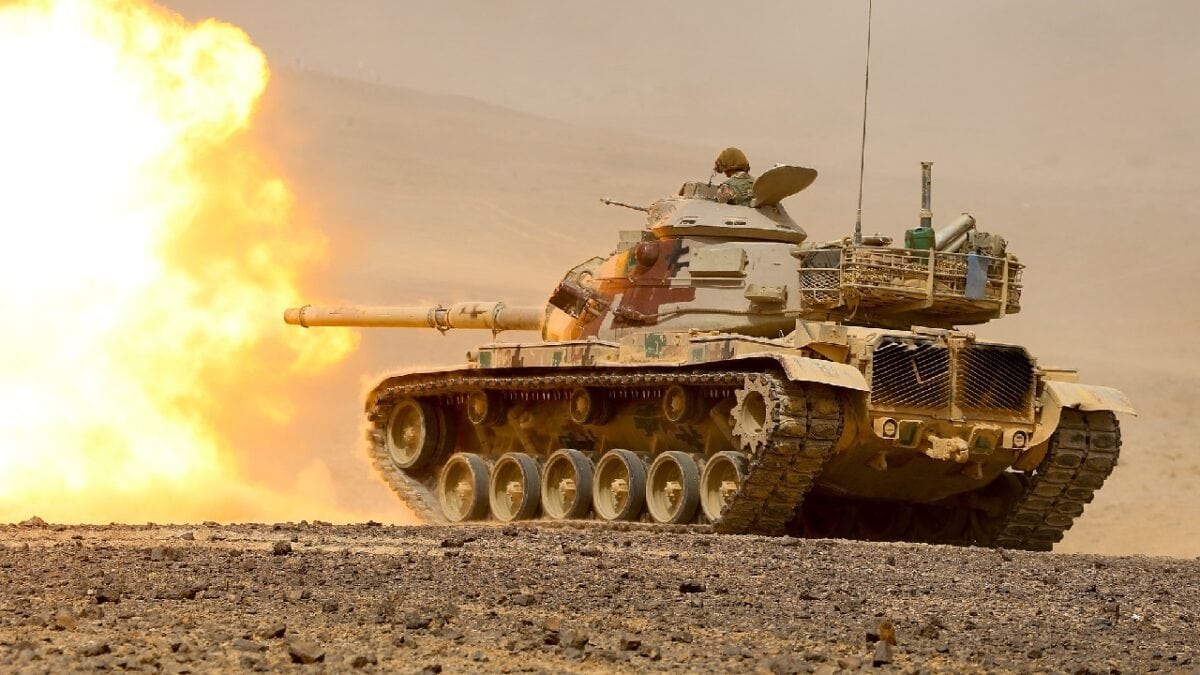
An M60A1 tank from the Royal Jordanian Armed Forces fires a round at a range in Wadi Shadiyah during a massive military demonstration in front of dignitaries and media.
Or it will require Ukraine to hold the lines against Russia’s attacks throughout the country in order to form a new armored organization, from scratch, in either a third country or in a relatively safe part of western Ukraine. In that safe location, troops would have to conduct many months of training, even in an expedited way, out of contact with the enemy, so that they could later be brought into the fight at full strength.
Obviously, either of those scenarios couldn’t be started until Ukraine had received a comprehensive set of combat equipment from western countries, had the gear brought up to operational standards, and supplied with large stocks of fuel and ammunition (necessary to sustain the training phase and then a sustained offensive campaign). Just the assembling of the equipment and sustainment would take three to four months, and that only after Western countries had made the decision to provide specific kit. Only then could the months of individual, crew, platoon, company, and battalion training begin – also measured in months.
There will be the temptation to treat this like a fire brigade: if the house is on fire, you marshal everything you can, throw it all at the fire as it becomes available, and hope you can extinguish the blaze. Many will want to rush every tank, artillery tube, rocket launcher, or anti-air missile to the front as soon as it’s available, to bolster the fighting capacity of the troops right now. While that will be an understandable temptation, such a course would have little chance of success.
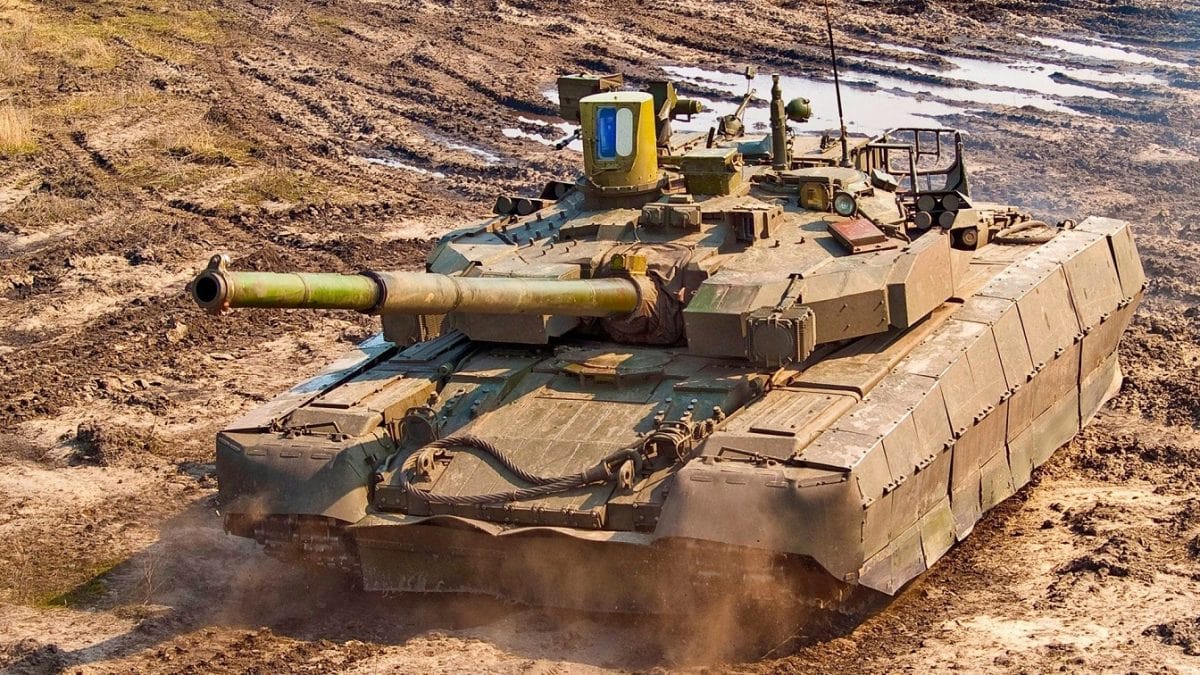
T-84 Ukrainian tank. Image Credit: Creative Commons.
War simply doesn’t work that way. It’s not merely about having a number of tanks or rocket launchers, but about having trained, disciplined troops that know what they’re doing, working as a team of teams, in various combat units working towards a single goal. It’s not unlike a sports team. It is possible to assemble a group of bone fide all-star athletes on a team, but if they don’t train together so that each works together as a team, even all-stars can get thrashed by an opponent that has less talent but works better together.
The Bottom Line
On one level, it is completely understandable that Zelensky would aggressively seek heavy weapons for his forces. But combat fundamentals aren’t impressed by emotions, the rightness of one’s cause, or how earnestly one side may desire a given outcome. If heavy weapons are inserted into the war zone piecemeal, sent to the front lines as they come in, they will add only marginal capacity to the units engaged at the front.
More importantly, it will be many weeks or months before meaningful volumes of heavy weapons could be delivered to Ukrainian combat units. Choosing to train new combat units from scratch, out of contact, would give Ukraine a better chance at producing a battle force of sufficient strength that it would have a chance to expel Russian forces, but doing so would take, in all likelihood, nine months to a year from now – and its not clear Ukrainian troops currently under fire could hold the line that long.
The ugly bottom line is this: the Battle of Donbas is almost certainly going to be won or lost with the forces engaging on the front lines today, using the equipment they have. It will take too long for Western governments to come up with a coherent equipping plan and then prepare, ship, and deliver the kit to its destination in a timeframe that could provide Kyiv’s troops the ability to tip the balance against Russia in the Donbas.
With @HARRISFAULKNER @FaulknerFocus explaining how US ramping up escalatory ladder w Russia doesn’t help Ukraine & does increase risk of nuke war – which we must avoid at all costs. Good to help Kyiv, but don’t harm our country in process. @defpriorities https://t.co/vExOKF4gZM
— Daniel L. Davis (@DanielLDavis1) April 26, 2022
Ukraine may be forced to make a choice between horrible options. Zelensky could roll the dice and try to create a stalemate to hold Russia at bay for close to a year and then mount an offensive with a trained battle force, or seek a negotiated settlement on the best terms available to stop the destruction of his army and people.
Trying to force and sustain a stalemate would guarantee Ukraine’s people continue to suffer and die and its economy to remain stagnant for the foreseeable future, and with no guarantee that creating an offensive force would later succeed (and employing it would necessarily spike the casualties again). Agreeing to a negotiated settlement in the near term would likely cement the loss of some eastern Ukrainian territory to Russia or Russian-speaking population, yet end the destruction in the rest of the country.
War is a horrible crucible that rarely produces any winners, and this one is the ugliest, bloodiest, and cruelest in Europe in nearly a century. Everyone must understand at this point there are not “good” solutions. Ukraine’s leaders must choose among a raft of unpalatable options in search of the least detestable.
I do not envy their task.
Now a 1945 Contributing Editor, Daniel L. Davis is a Senior Fellow for Defense Priorities and a former Lt. Col. in the U.S. Army who deployed into combat zones four times. He is the author of “The Eleventh Hour in 2020 America.” Follow him @DanielLDavis1.

